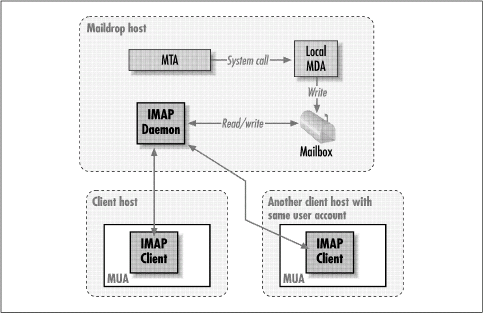IMAP Commands
Because IMAP is a complex protocol, it has many more commands than the simple POP protocols. This section provides a reference for all IMAP commands in the proposed standard. Each command and its possible server responses are described in detail.

Just like the other protocols, any nonstandard commands, such as those proprietary commands that might be created by a particular vendor, are required to begin with an “X”.
Like POP, an IMAP consists of several distinct states. Some commands are only valid in a given state. Before detailing the commands themselves, a high-level look at the states is appropriate.
IMAP sessions may be in one of four states at any one time. These states are:
Nonauthenticated State
Authenticated State
Selected State
Logout State
Upon initial connection to an IMAP server, a client is in the Nonauthenticated State. A client enters the Authenticated State when a user log into the server, providing an appropriate type of authentication credentials.
Once logged in, a client may select a mailbox on which to operate. Selecting a mailbox puts the client in the Selected State and allows access to commands that operate on a mailbox.
The Logout State is entered when a client logs out, a server refuses service, or a connection is otherwise interrupted. This state lasts just long enough for the client and server to close a connection. ...
Get Programming Internet Email now with the O’Reilly learning platform.
O’Reilly members experience books, live events, courses curated by job role, and more from O’Reilly and nearly 200 top publishers.

